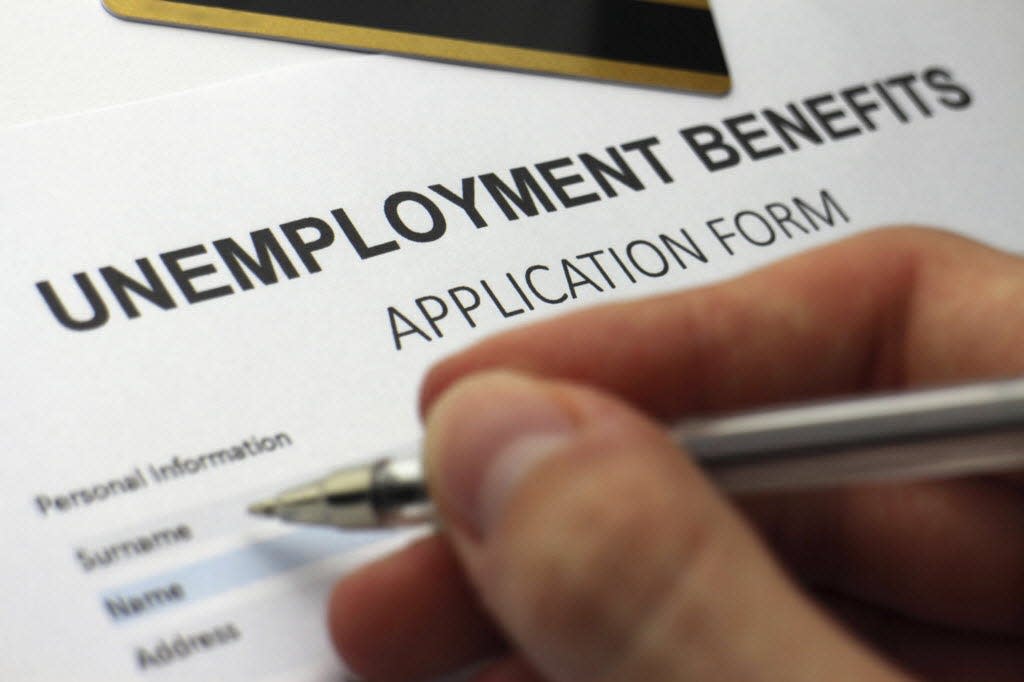Black Wisconsinites were half as likely as white applicants to get pandemic unemployment payments, report finds

MADISON – A federal watchdog agency is urging Wisconsin to look into racial disparities in how a pandemic-era unemployment program was paid out, after it showed that white claimants got paid out at about twice the rate of Black applicants.
The U.S. Government Accountability Office released a report looking at the implementation of Pandemic Unemployment Assistance, a program established to pay unemployment to self-employed and part-time workers during the pandemic. Those workers typically wouldn't qualify for unemployment.
Researchers looked at Wisconsin's implementation of the program in addition to Louisiana, New York and North Dakota. The audit was conducted from January 2020 through April 2021, covering some of the most trying times for the Wisconsin unemployment system, when the number of claims soared and the department struggled to keep up with the influx of claimants.
In Wisconsin, 43.3% of white claimants were receiving their PUA payments, while about 22% of Black claimants, about 42% of Asian claimants about 27% of Native claimants and about 25% of Hispanic claimants were receiving their payments.
North Dakota also showed a gap between different races and ethnicities in its payouts, with 39% of white claimants receiving benefits, compared to about 20% of Black claimants. Asian, native and Hispanic claimants in North Dakota all received benefits at about the same rates as white claimants, the report showed.
When asked about the data, the DWD wasn't sure what caused the disparities between who received their payments during the pandemic.
"Wisconsin officials stated that they did not know what the possible causes might be for the racial and ethnic disparities we found in their state data," the report said. "Officials stated that their IT system does not capture the reason for denial of claims, and that they would need to examine each PUA application manually."
The report suggested that the Department of Workforce Development, which implements the state's unemployment program, should examine and address equity issues within its system.
In a statement, the department said it is working to close the gaps shown by the report.
"The Department of Workforce Development strives to make Wisconsin a fair and just place for all people to live and work," said Jennifer Sereno, the communications director for the department. "This includes eliminating racial and ethnic disparities while advancing equity and economic opportunity through workforce development."
The department has accepted a grant from the Department of Labor to implement projects to improve equity, Sereno said, and is working toward a more accessible platform to apply for benefits, including implementing more "plain language" and options for people to file even if they don't have internet access.
Outdated IT system caused issues in Wisconsin
Another issue the report highlighted: the amount of time it took Wisconsin to pay off the massive number of PUA claims. Wisconsin started making its payments for the program on May 21, 2020, but paid out only 1,000 claimants by the end of that month. In June, it paid first benefits to 6,000 claimants, and about 17,000 in July.
By comparison, New York was able to start making PUA payments on April 13, 2020, paying about 7,000 claimants by the end of the month. The state then ramped up to 568,000 payments in May that year.
Wisconsin's unemployment woes during the early months of the pandemic led to a queue that took months to clear, with the number of unpaid claims reaching over 800,000 in early August 2020. That delay continued into early 2021 before the department was able to clear it.
More: Wisconsin, other states failed to meet federal rules for clearing unemployment appeals
One of the main reasons for those delays was Wisconsin's antiquated unemployment system, an issue that state officials had warned of years before COVID-19 reached the state. The system wasn't able to be programmed to handle many of the pandemic programs instituted by the federal government, causing slow downs and confusion at the agency.
The system also did not have the ability to receive documents from claimants online, meaning that faxes and paper copies were the only means of getting some information to the DWD and further slowing down the process for many Wisconsinites waiting on unemployment.
Wisconsin said it was closely reviewing each application in order to make determinations manually, in an effort to get payments out without overpaying claimants, and cited that as a reason for the slow pace of getting benefits to those who applied.
In addition, the agency was not staffed at the level needed to handle the influx of claims at the beginning of the pandemic, citing the hiring of more workers as another reason getting PUA claims processed took a long time.
The state has taken strides to address the outdated system since the pandemic exposed its weaknesses. The department has implemented a number of changes in the system. A full update of the program is expected to take several years and cost about $100 million.
Laura Schulte can be reached at leschulte@jrn.com and on Twitter at @SchulteLaura.
Our subscribers make this reporting possible. Please consider supporting local journalism by subscribing to the Journal Sentinel at jsonline.com/deal.
DOWNLOAD THE APP: Get the latest news, sports and more
This article originally appeared on Milwaukee Journal Sentinel: Wisconsin Black applicants lagged whites in pandemic unemployment

